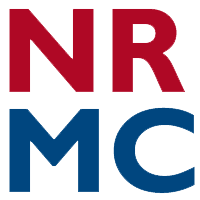NRMC Endoscopy Surgical Services
Our Endoscopy Suite
NRMC has a fully equipped endoscopy suite that is dedicated for EGD (upper GI) and Colonoscopy (lower GI) examinations.
Nevada Regional Medical Center
800 South Ash
Nevada, MO 64777
To schedule, call 417-448-2121.
EGD – Esophagogastroduodenoscopy (Upper GI)
Upper GI endoscopy is a procedure that uses a lighted, flexible endoscope to see inside the upper GI tract. The upper GI tract includes the esophagus, stomach, and duodenum—the first part of the small intestine.
To prepare for upper GI endoscopy, no eating or drinking is allowed for 4 to 8 hours before the procedure. Smoking and chewing gum are also prohibited.
Patients should tell their doctor about all health conditions they have and all medications they are taking.
Driving is not permitted for 12 to 24 hours after upper GI endoscopy to allow the sedative time to wear off. Before the appointment, patients should make plans for a ride home.
Before upper GI endoscopy, the patient will receive a local anesthetic to numb the throat.
An intravenous (IV) needle is placed in a vein in the arm if a sedative will be given.
During upper GI endoscopy, an endoscope is carefully fed into the upper GI tract and images are transmitted to a video monitor.
Special tools that slide through the endoscope allow the doctor to perform biopsies, stop bleeding, and remove abnormal growths.
After upper GI endoscopy, patients may feel bloated or nauseated and may also have a sore throat.
Unless otherwise directed, patients may immediately resume their normal diet and medications.
Possible risks of an upper GI endoscopy include abnormal reaction to sedatives, bleeding from biopsy, and accidental puncture of the upper GI tract.
Colonoscopy
Colonoscopy is a procedure that uses a long, flexible, narrow tube with a light and tiny camera on one end, called a colonoscope or scope, to look inside the rectum and entire colon. Colonoscopy can show irritated and swollen tissue, ulcers, and polyps—extra pieces of tissue that grow on the lining of the intestine. Colonoscopy can show irritated and swollen tissue, ulcers, and polyps—extra pieces of tissue that grow on the lining of the intestine.
A colonoscopy is performed to help diagnose: changes in bowel habits; abdominal pain; bleeding from the anus; and weight loss
Colonoscopy can also be performed as a screening test for colon cancer.
Preparation for a colonoscopy includes talking with a gastroenterologist about medical conditions the person has and medications the person is taking, arranging for a ride home after the procedure, and cleansing the bowel.
The doctor will give written bowel prep instructions to follow at home. A doctor orders a bowel prep so that little to no stool is present inside the person’s intestine.
The doctor will not be able to see the colon clearly if the prep is incomplete.
For the test, the person will lie on a table while the doctor inserts a colonoscope into the anus and slowly guides it through the rectum and into the colon.
The doctor can remove polyps during colonoscopy and send them to a lab for testing. The doctor may also perform a biopsy, a procedure that involves taking a small piece of intestinal lining for examination with a microscope.
Bleeding and perforation are possible complications of a colonoscopy.





